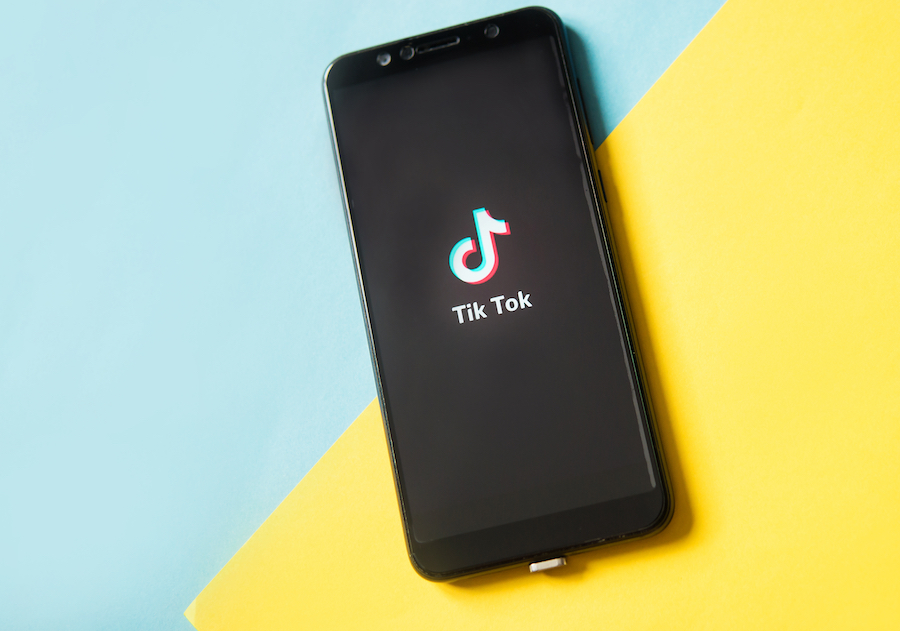How to Ink a Brand Strategy in 5 Steps With TikTok
By Amy Jacques
July-August 2020
At this year’s Social Media Week, which evolved into a month-long virtual conference in May called #SMWONE due to COVID-19, Subin Kim, creative strategist at TikTok, shared key steps to create your brand strategy for the video-sharing social network service.
Formerly known as Musical.ly, TikTok has a global audience with more than 800 million active users in 75 languages and 150 countries. “Gen Z and millennials are the most represented audiences. However, a strong presence of Gen X offers an opportunity to reach the children and parents of the family unit,” said Kim, adding that there’s a migration of older generations as well.
TikTok continues to grow in popularity, with its ability to capture people’s attention quickly, encouraging engagement and connection.
“My job is to help brands bring their presence onto TikTok, both paid and organic,” Kim said in a discussion with Anton Perreau, senior vice president at digital creative agency Tommy. “First, you have to educate your team on the platform and the ad units.”
1. Educate internally.
TikTok uses an algorithm that displays content based on user preferences, differing from other social media platforms. A user’s “For You” page (a personalized video based on what a specific user watches, likes and shares) and “Following” page (the accounts that a user follows) are the primary means of new content discovery on the app.
Engagement metrics can be tracked by outside socials, completed views, repeat views, likes, comments and shares.
There are standard ad formats:
• Top view: This is the user’s first in-feed video that mimics native TikTok content, up to a 60-second video with the sound on.
• Brand takeover: This is the user’s first experience upon entering the app, a 3-5-second static image or video with the sound off.
• In-feed ads: Up to 15 seconds of video, with the sound on, can drive traffic to a deep link, external page or experience.
And there are non-standard ad formats:
• Branded hashtag challenge: A brand-sponsored hashtag inspires and aggregates branded user-generated content.
• Branded effects: These are a customizable collection of 2-D, 3-D and AR enhancements to real-world environments.
2. Play by the rules.
TikTok users should be creative, authentic and foster a sense of connection, Kim said.
Users make content inspired by their every day lives, imparting a strong sense of relatability. Most content is captured on a phone and edited in the app, and the content feels “real” when compared to the high-production value of typical brand content.
Video examples best embody these three principles in both execution and representation for the genre:
1. Creativity
• DIY: Homemade arts and crafts projects that are unique and interesting
• Food: Making and displaying beautiful and elaborate food and meals
• Travel: Visually beautiful on-location travel footage
• Visual edits: Innovative editing paired with compelling visuals and catchy music
2. Authenticity
• Identity-driven: Experiences related to racial, gender or sexual identity• Personal stories: Intimate moments and stories about friendships or relationships
• Slice of life: Funny, weird, crazy moments captured while just living life
• Weird: Bizarre and strange humor that speaks to users’ sensibilities
3. Connection
• Recycled sound: Like visual memes, sounds can be used, reused and remixed
• Duets: Users can respond to and comment on other videos using the “duet” feature
• #Challenges: Organic/branded challenges encourage users to submit custom UGC (user-generated content)
• Meme formats: Popular TikToks can become memes, repeated and remixed
Kim said to avoid the “guardrails” of being overly promotional (relying on unedited video advertising already created by your brand), being a repetitive creative (having a diverse content mix that does not rely on the same format over and over), and being insincere or inauthentic (avoiding the feeling of trying too hard).
3. Create your recipe.
While Kim said users don’t need to post daily, they should be consistent with how frequently they post in order to keep audiences engaged.
Here’s TikTok’s recommended recipe for content creation:
• Royalty-free music: Avoid using licensed music so there won’t be any extra delays with your content creation.
• Drumbeat content: If you’re hoping to grow a channel, then a consistent presence with a steady content stream will help increase awareness of the channel and your following.
• Ongoing trends: TikTok conversations and trends have a longer shelf-life than other platforms, allowing for evergreen content that can also feel timely. Old trends can resurface at any time.
4. Define your voice.
“Some brands have original content or existing IP (intellectual property) that they repurpose,” said Kim. “Find what works for you. See what resonates with your audience, and go from there.”
As far as TikTok accounts, The Washington Post (launched in May 2019) and Nickelodeon (launched in May 2017) are two brands that are doing this well, he said.
Post staffers shoot and create the content themselves, live at their offices. There is also occasional on-location news reporting, and political celebrities often make appearances. The tone and voice are fun and down to earth.
Nickelodeon has a diverse content mix focused on their brand. They mix older IPs and nostalgia content aimed at Gen Z, and are connected to the latest trends and memes.
5. Collect materials.
Your resources are the core official assets that can be used to create TikTok content. Find interesting ways to mix it up and think carefully about rights management while collecting materials. These include:
• Marketing assets: Existing marketing audio and visual content (videos or any moving images you have on file)
• Real-world footage: Footage shot on a smartphone or in the TikTok app
• B-roll: Items you’ve captured or saved that are not already in rotation on social media
• Reposts: Content inspired by your brand or IP, made by TikTok users, and reposted
It’s time to get started.
Pick the right creators — those who are the most passionate and can best speak to your brand’s tone and voice. It’s all about distribution and sharing content, Kim said.
For your brand to capture an amplified moment, focus on authenticity first, remember that sound and music are the backbone of TikTok, be creative and try new things, he said.
Everything — as much as possible — should feel like it’s been augmented on the phone. Don’t over-prepare the stories, but play around on the app, interact with other content and use the Discover feature (for searching hashtags, keywords, users, videos and sound effects).
Kim ended his presentation by offering these five principles when implementing your brand strategy on TikTok:
- Use both sound effects and music.
- Try to do something you think you haven’t done before.
- Put music and sound first — it’s the spine of your content.
- Have human sensibilities.
- Don’t include a heavy amount of branding.
photo credit: anna markina



